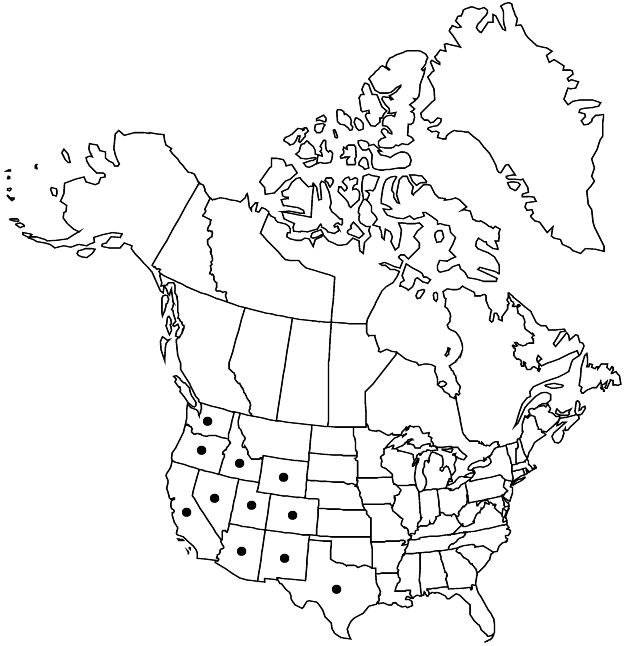Mentzelia montana
Fl. S. Calif., 240. 1923.
Plants wandlike or candelabra-form, (5–) 20–40 (–50) cm. Basal leaves persisting; petiole present or absent; blade lanceolate to linear, margins usually deeply to shallowly lobed, rarely entire. Cauline leaves: petiole present or absent (proximal leaves), absent (distal leaves); blade lanceolate to linear (proximal leaves), ovatelanceolate to linear (distal leaves), to 13 cm, margins deeply to shallowly lobed or entire. Bracts usually green with prominent white base conspicuously extending outwards from midvein, rarely green, usually obovate, rarely lanceolate, 5.9–9.2 × 1.7–5 mm, width 1/5–2/3 length, not concealing capsule, margins usually 3–7-lobed, lateral lobes usually prominent, rarely entire. Flowers: sepals 1–4; petals orange proximally, yellow distally, 2–6 (–8) mm, apex retuse or rounded; stamens 20–40, 2–7 mm, filaments monomorphic, filiform, unlobed; styles 1.5–3.5 (–6) mm. Capsules cylindric or clavate, 6–17 (–20) × 2–3 mm, axillary curved to 45° at maturity, usually inconspicuously longitudinally ribbed. Seeds 15–35, in 2+ rows distal to mid fruit, tan, moderately to densely dark-mottled, usually irregularly polygonal, occasionally triangular prisms proximal to mid fruit, surface tuberculate under 10× magnification; recurved flap over hilum absent; seed-coat cell outer periclinal wall domed, domes on seed edges more than 1/2 as tall as wide at maturity. 2n = 36.
Phenology: Flowering Apr–Aug.
Habitat: Open, disturbed slopes or flats, grasslands, sagebrush scrub, coniferous forests.
Elevation: 600–3400 m.
Distribution

Ariz., Calif., Colo., Idaho, Nev., N.Mex., Oreg., Tex., Utah, Wash., Wyo., Mexico (Baja California)
Discussion
Mentzelia montana is widely distributed and, in portions of its range, difficult to distinguish from M. albicaulis. Mentzelia montana is morphologically intermediate to M. albicaulis and M. congesta, but ecologically more similar to M. congesta (J. M. Brokaw 2009). Mentzelia montana generally occurs at higher elevations than M. albicaulis and is best distinguished morphologically from M. albicaulis by capsule and bract characteristics. Capsules of M. montana are usually not longer than 17 millimeters or curved more than 45°, whereas those of M. albicaulis are often longer and more curved. Both species may have bracts with some lobes and whitish base, but only M. montana has populations in which these features are prominent. Sepal and petal lengths, which have sometimes been used to distinguish these species, overlap completely.
Selected References
None.
Lower Taxa
"not elongating" is not a number.